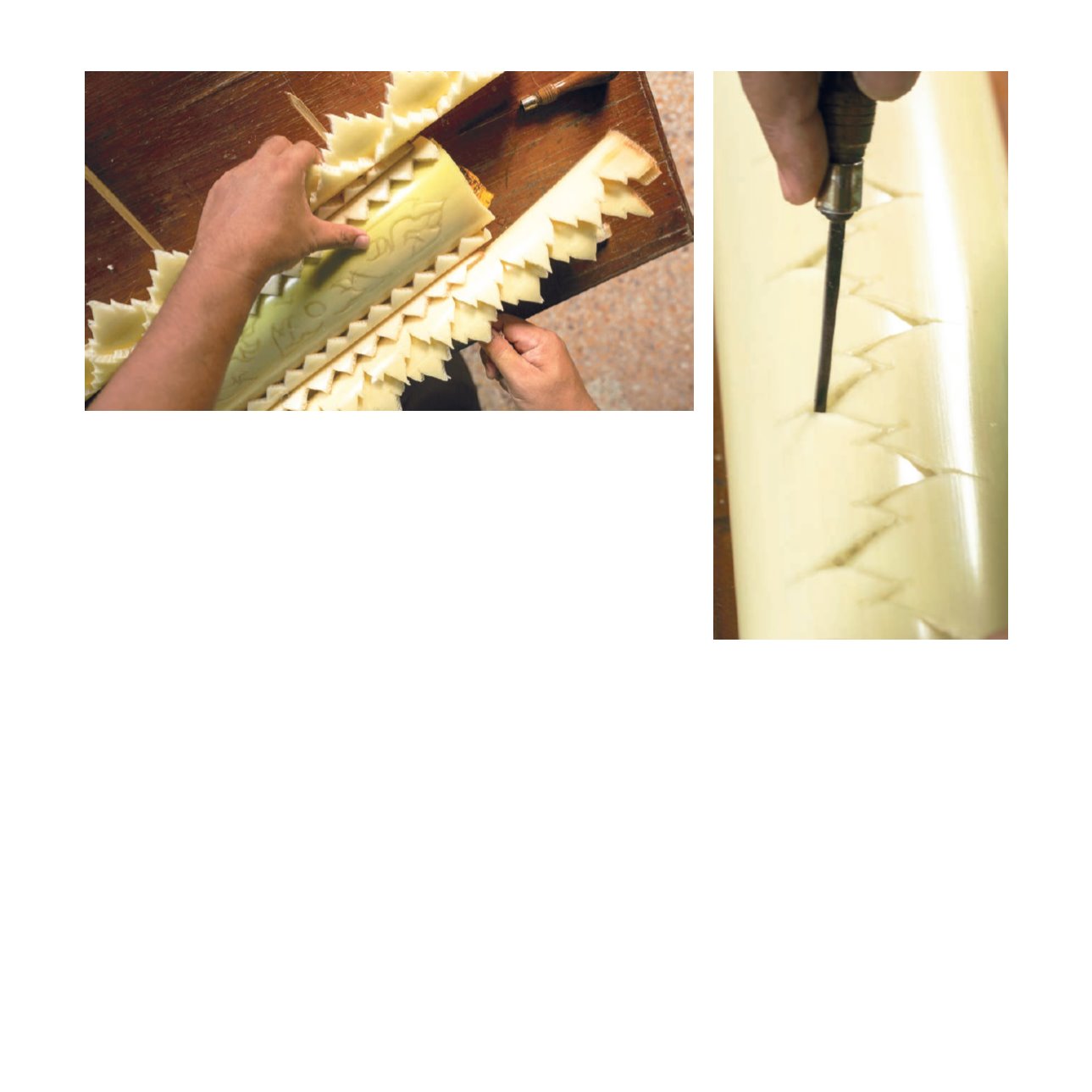

Science and Art Thai Craftsmanship
|
129
Kluai Tani (wild banana) is the popular banana tree used by banana stalk
carvers because the meat is solid, white, clean, less resin, and its color does not
change fast. Nowadays, Kluai Tani is getting rare and its size is not suitable for
carving. Kluai Namwa becomes a substitute. But only a young Kluai Namwa or a
Kluai Namwa which has never had a bud before will be selected because of its soft
and easy to carve patterns.
Each step of stalk carving begins with the carver paying a homage to teachers
to commemorate the devoted teachers who transferred the expertise. After that,
the carver will prepare banana stalks in the size that fit the place to be decorated
and carve the stalks into Thai motifs following the creativity of the craftsman. Finally,
each of carved stalks will be arranged in a set pattern.
The composition of the set pattern comprises a basic pattern like carving
Lai Fan Pla (zigzag pattern) or Lai Fan Neung (1st Herringbone pattern) up and
down alternated all over the stalk. More zigzag patterns such as Lai Fan Sam
(3
rd
Herringbone pattern) or Lai Fan Ha (5
th
Herringbone pattern) can be added,
dependent on the carver’s expertise. When vertically splitting banana stalks, there
will be brought to connect with Lai Na Kradan (front board pattern) and Lai Sao
(pole) which are the main part of the pattern.
Lai Na Kra Dan pattern (front board pattern) is the main component of
the pattern sets on top, middle and base parts, mostly carved in Lai Rak Roi, Lai
Kampu, Lai Khruea Thao, Lai Dok. The patterns to carve are similarly complicated.
Most of them are Lai Khruea Thao (bunch of vine) such as Lai Mali Lueai (weeping
jasmine), Lai Kanok , animals such as fish, birds, butterflies, dragons, Himavanta
creatures, flowers, funny patterns, language scripts, and 12 zodiac animals.
• Lai Fan Sam (3
rd
Herringbone pattern) is a pattern
adapted from the the teeth of a fish.


















